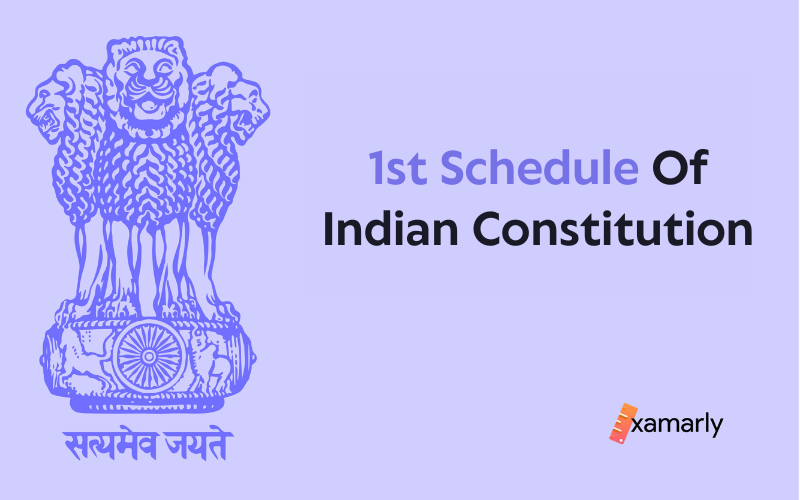First, let us briefly look at what schedules are. The Indian Constitution has 25 parts and 12 schedules. Schedules are essentially extra information added to provide additional details regarding the functioning of the particular policy or provisions. There were originally 8 schedules in the Constitution including 1st schedule of Indian constitution. Based on the various amendments over time, 4 more were added to the previous 8, thereby bringing it up to a total of 12. Constitutional lists called schedules are used to classify and compile administrative work and legislative agendas.
This article deals with the 1st schedule of Indian Constitution. Read it further to know what this schedule is all about, its significant provisions and which amendment amended the first schedule of Indian Constitution. This article will be beneficial for the UPSC aspirants preparing for the UPSC Exam.
What Is The 1st Schedule Of Indian Constitution?
Coming to the topic at hand, schedule 1 of Indian constitution lays out the list of states and union territories. It specifies the legal and border-related changes affecting the states and Union Territories. Thus, it concerns explicitly with Articles 1 and Article 4. Indirectly, it specifies the boundaries of the division of power for states and UTs.
Main Provisions
- Names of States – The names of the 28 States of India are mentioned.
- Territorial Jurisdiction of States – Along with the names, the territorial jurisdiction of each state is mentioned. This is done by referring to the Article and the Act that specified the boundaries and components of each state.
- Names of Union Territories – The names of the 8 Union Territories of India are mentioned.
- Extend of Union Territories – Along with the names, the years, areas, Articles, and acts that characterize the formulation of a Union Territory are mentioned.
Amendment To First Schedule
1 schedule of Indian Constitution has been subject to constitutional amendment based on the re-organization, addition, or change in status of a state or union territory. Following are some relevant acts and the grounds for changes:
- 7th Amendment (1956) – Re-organization of states based on linguistics and the introduction of Union Territories. With the establishment of the state of Andhra Pradesh, the 7th Amendment of the Indian constitution in 1956 carried out the first amendment to Schedule 1.
- 9th Amendment (1960) – Small modifications to Indian UT as a result of an agreement with Pakistan to settle disputes through border village distinction.
- 10th Amendment (1961) – Dadra and Nagar Haveli are incorporated as UT post their acquisition from Portugal
- 12th Amendment (1961) – Goa, Daman, and Diu are incorporated as UT as a result of the acquisition from Portugal
- 14th Amendment (1962) – Pondicherry was included in the Union of India
- 36th Amendment (1975) – Sikkim is acknowledged as a state.
- 100th Amendment (2015) – Following the signing of the Land Boundary Agreement (LBA) Treaty between India and Bangladesh, certain enclave territories were exchanged with Bangladesh.
The very recent amendment was through the Jammu and Kashmir Reorganisation Act, of 2019. It amended this by removing the Jammu and Kashmir entry from the State list and adding “Jammu and Kashmir” and “Ladakh” entries to the Union Territory list.
Conclusion
The constitution is an important document that we should familiarize ourselves with. The schedules comprise clarifications and categorizations that help us understand the Indian Constitution elements better. This article deals with the very basics of the functional items that comprise India today. It deals with the key powers of the nation.
UPSC Previous Year Questions
Q1: If a new state of the Indian Union is to be created, which one of the following schedules of the Constitution must be amended? [UPSC 2001]
(a) First
(b) Second
(c) Third
(d) Fifth
Ans (a) Schedule 1 of Indian Constitution should be modified if any new state is formed.
Q2: Which one of the following schedules of the Indian Constitution lists the names of states and specifies their territories? [UPSC 2003]
(a) First
(b) Second
(c) Third
(d) Fourth
Ans (a)






